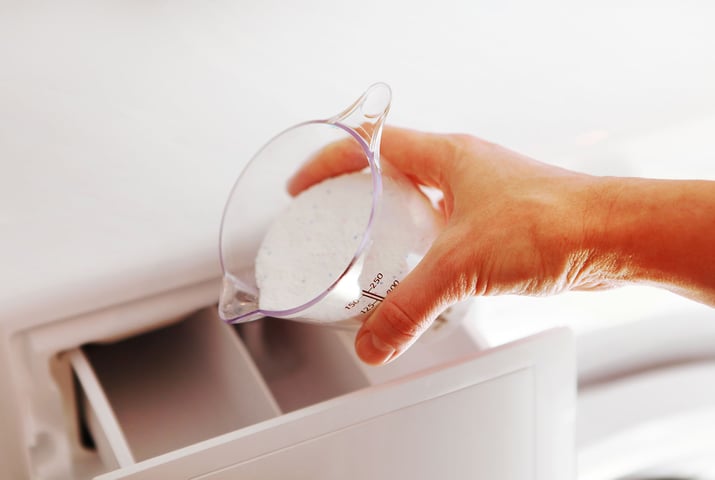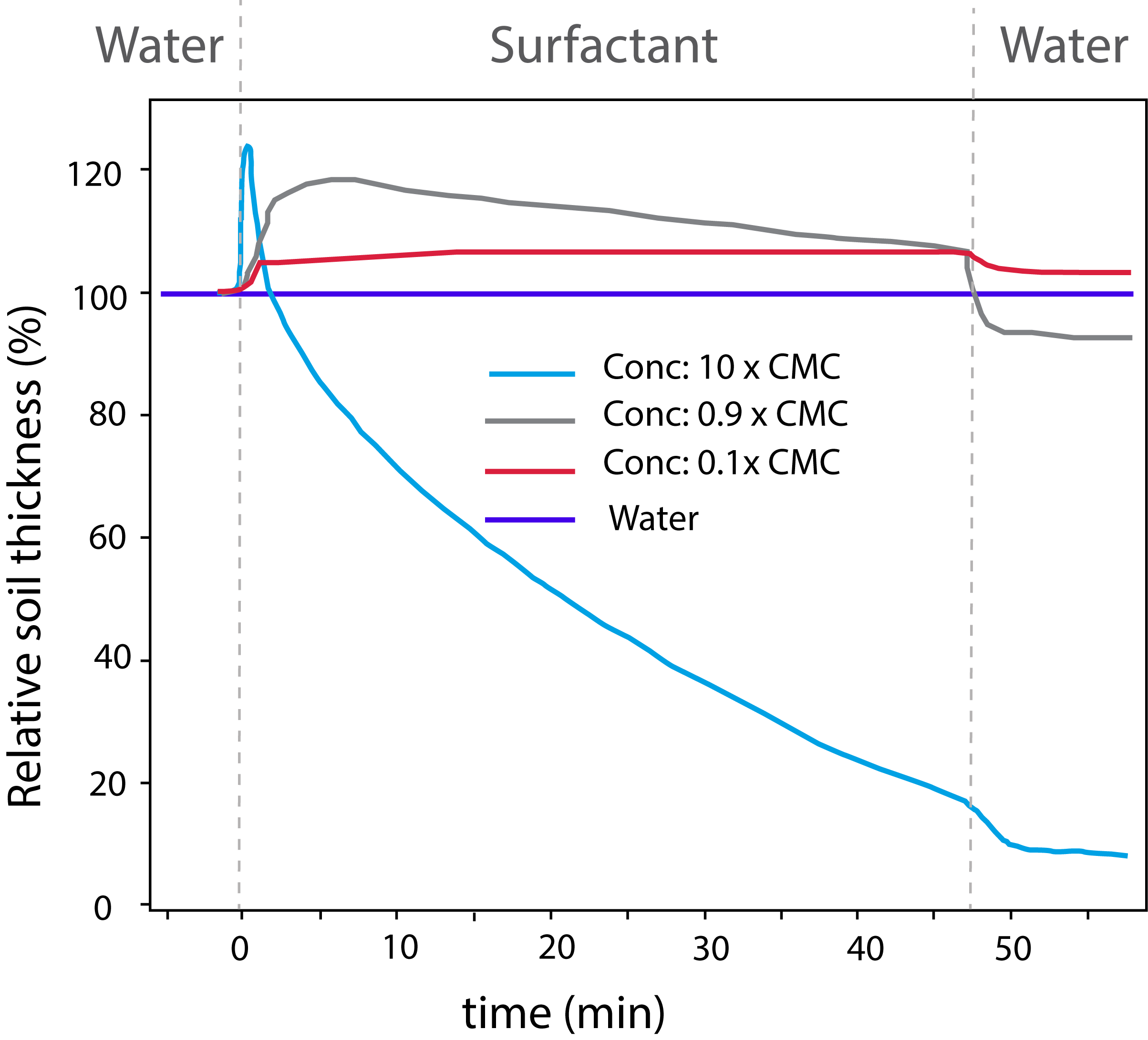
What is the optimal surfactant concentration to use in a cleaning formulation? Here we show how the cleaning efficiency as a function of detergent concentration can be assessed within an hour.
An efficient approach to evaluate the soil removal efficiency as a function of detergent concentration is to use a surface sensitive real-time analysis method. For example, QSense® cleaning profile provides information about the soil removal at different conditions in real time. Parameters such as surfactant concentration and cleaning temperature can therefore be assessed already during cleaning test.
In this study, we evaluated the soil removal efficiency at three different concentrations of surfactant, 0.1CMC, 0.9CMC and 10CMC. Water was used as a negative control.
The results in Fig 1. show that the water did not have any effect on the soil thickness, i.e. it did not wet the soil. All the three surfactant samples, however, wetted the soil, i.e. the soil thickness increased upon exposure. The results also show how much soil that is removed during the surfactant exposure. The lowest concentration, 0.1CMC, did not remove any soil. The 0.9CMC sample, removed about 10% of the soil in the water rinse step (at 47 minutes). The highest concentration, 10CMC removed soil throughout the entire period of exposure. After the water rinse, ~10% of the soil remained at the surface.

Figure 1. The graph shows how the soil is wetted and removed from the surface at three different concentrations of surfactant. Water is used as negative control.
Using a surface sensitive real time analysis method, such as QSense cleaning profile, the soil removal efficiency as a function of concentration can be assessed and quantified in one hour. The method also provides information about the wetting of the soil.
Download the case study to learn more
Discover how QCM-D analysis reveals real-time etching dynamics, helping optimize cleaning processes and protect surfaces from unwanted damage.
Learn how QSense QCM-D analysis can reveal membrane fouling dynamics and optimize cleaning strategies for more efficient water treatment
Discover how QCM-D enables real-time cleaning analysis and reveals surfactant performance to optimize cleaning product development
Explore QSense QCM-D sensors to optimize cleaning efficiency with real-time insights, enhancing formulations and protocols across various conditions.
Discover how QSense QCM-D technology reveals real-time cleaning insights. Join our webinar to enhance your cleaning strategies and efficiency.
QSense QCM-D technology enables analysis of cleaning process dynamics, surface etching, and surface residual
Cleaning product performance assessments can be time-consuming, but with the right approach, evaluation and ranking can take less than one hour.
Read about the different components in cleaning products and how they work on a molecular level.
Eva Ekerot is the Marketing and Communications Director for QSense. She has a background managing numerous product portfolios within the medical technology and analytical instrument industries. She is devoted to user-driven development of high-tech products. More user-friendly technology is accessible to more people!
